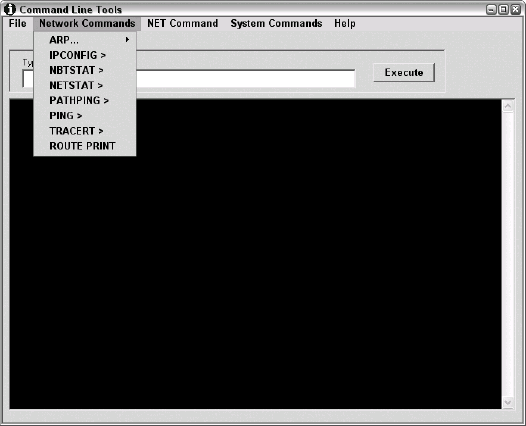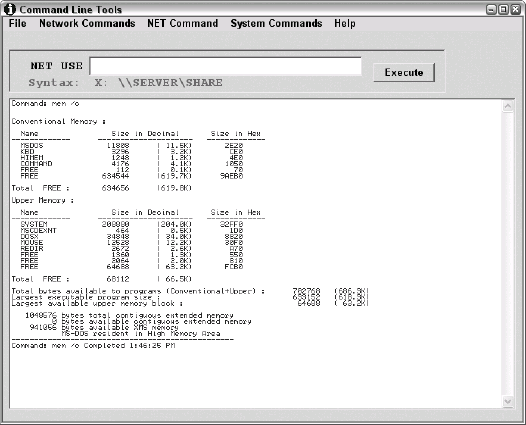The ToggIt Command Line Helper is a kind of a super
help utility that makes it easier for you to remember command line
syntax for network and hardware-related commands. The vendor originally
designed the utility as a study aid for administrators obtaining their
certification, but that isn't any reason you can't use it for other
tasks. You can download this utility from a number of places online, but
the safest location is the ToggIt Web site at http://www.toggit.com/. You can also obtain it from the NoNags site at http://www.nonags.com/nonags/cl.html. When you visit the NoNags Web site, you should
also view some of the other command line utilities.
|
You'll run into a lot of
buyer beware scenarios when working with software on the Internet.
Sometimes, a piece of software that looks completely innocent can trash
your system. The ToggIt Command Line Helper brought this point home to
me recently. You can download this utility from a number of locations
online.
The software itself is freeware, so no one should ask you to buy it. One
of the locations that I tried to use to download this software had
added a shell around the actual utility. The shell asked me to install a
piece of adware in exchange for using this free utility. The deception
started with the first page of the installation program where the vendor
simply asked me to agree to the licensing agreement without telling me
anything about that agreement. Only by opening the licensing agreement
and reading it before I went forward was I spared the frustration of
uninstalling some very nasty adware later. Always read the licensing
agreement before you start an installation. Make sure you understand
what the vendor expects from you.
|
|
The basic ToggIt
Command Line Helper interface looks like a nicer form of the standard
command line prompt, as shown in Figure 1. The interface includes a menu with
predefined commands. To use a particular command, select it from the
menu. In addition, you can type commands directly in the Type Command to
Execute field that appears directly below the menus.

Many of the commands that the ToggIt Command Line Helper supports
execute directly. For example, when you select the Mem /C command from the System Commands => Mem menu, the utility
automatically executes the command and displays the result as shown in Figure 2. However, when you select the Net
Use command from the Net Command menu,
the utility displays the prompt shown in Figure 2. In this case, you need to provide
additional information before you can execute the command. The utility
prompts you for the information. Simply type the values and click
Execute.

Although the ToggIt
Command Line Helper is limited, it does provide some useful
functionality for someone who needs the required commands.
Theoretically, you could use this utility as a support tool. Simply have
a user access the utility and read the information it provides. Because
you aren't expecting the user to perform any complicated task (just
select a menu entry), things will normally work as expected.
|
When Not Enough Is
Too Much
There's a danger that
many people disregard when it comes to utilities of any sort. Too many
utilities can become a liability, rather than a help. Digging through
the accumulation of utilities becomes a chore and requires time that you
won't normally have in an emergency. Keeping all of those utilities
updated and paying for licenses when necessary adds to the problem. It
all comes down to a problem of priorities—deciding which utilities you
really need to get your work done and which are just added weight.
Of course, you want
to try out new utilities and discard those that don't work as intended.
In some cases, clutter is simply a matter of not getting rid of
utilities that failed to meet expectations. Fortunately, you have an
easy and convenient way of locating utilities that you don't really use.
Simply use the Dir command. You can
specify that you want to see only EXE files. Use the /TA command line switch to change the time field to
the last access date. Add the /OD
command line switch so that you can see which utilities you haven't
accessed for a long time. By using this technique, you can clean up your
list of utilities very quickly and keep your toolbox fit and trim.
|